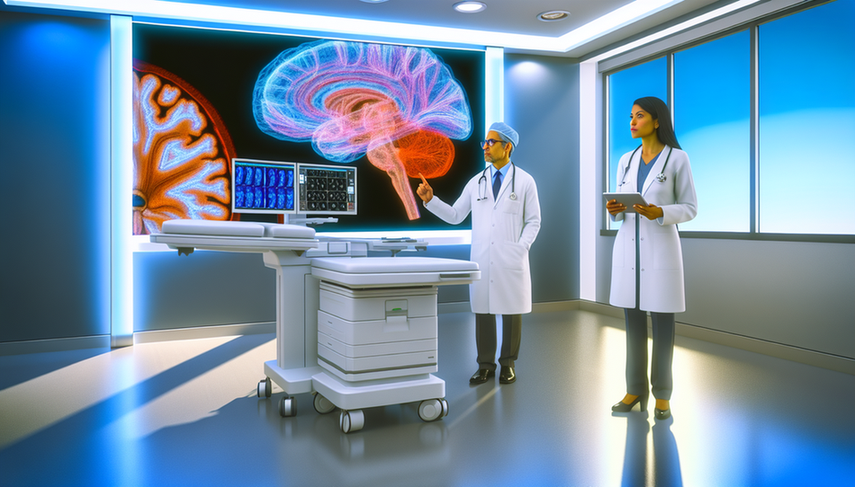Neural Networks and Neuroimaging: AI in the Diagnosis of Brain MRI and Neurological Disorders

The integration of artificial intelligence (AI) in the field of neuroimaging has revolutionized the diagnosis of neurological disorders. Neural networks, in particular, have proven to be powerful tools for analyzing brain MRI images, enabling more accurate and early detection of various brain diseases. This advancement not only improves diagnostic accuracy but also optimizes response times in critical situations.
Advances in the Use of Neural Networks and Neuroimaging
Convolutional neural networks (CNN) have been widely used in the analysis of brain MRI for diagnosing diseases such as Alzheimer's and epilepsy. These networks are capable of learning complex features from images, allowing for precise classification of neurological conditions. A recent study demonstrated that CNNs can distinguish between Alzheimer's and mild cognitive impairment with remarkable accuracy, underscoring their potential in daily clinical practice.
Moreover, the detection of acute strokes has greatly benefited from AI, enabling rapid and accurate identification of infarcts and hemorrhages. This is crucial for initiating timely interventions that can significantly reduce associated morbidity and mortality.
In the realm of dementia, AI has facilitated the differentiation between Alzheimer's and other forms of cognitive decline, utilizing complex discriminative models that surpass traditional classifiers. However, it is important to highlight that validation in independent cohorts remains a methodological challenge that must be addressed to ensure the clinical applicability of these models.
Conclusions
The application of neural networks in neuroimaging represents a significant advancement in the diagnosis of neurological disorders. As these technologies continue to evolve, it is essential for healthcare professionals to stay updated on their capabilities and limitations. Collaboration between AI experts and medical professionals will be crucial to maximize the potential of these tools in clinical practice, ensuring they are used ethically and effectively to improve patient outcomes.
Referencias
- [1] Hippocampal shape and asymmetry analysis by cascaded convolutional neural networks for Alzheimer's disease diagnosis.
- [2] Machine learning applications on neuroimaging for diagnosis and prognosis of epilepsy: A review.
- [3] Artificial Intelligence and Acute Stroke Imaging.
- [4] Artificial intelligence for diagnostic and prognostic neuroimaging in dementia: A systematic review.
Created 20/1/2025
